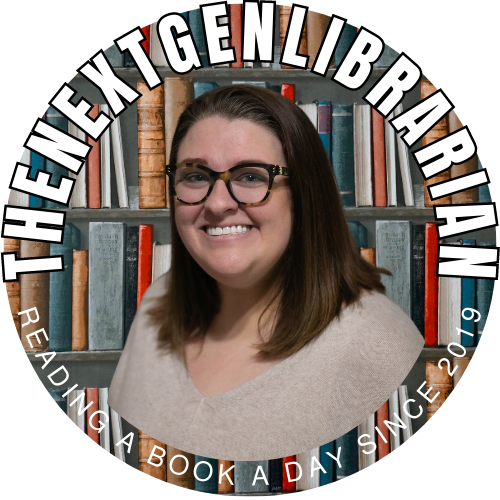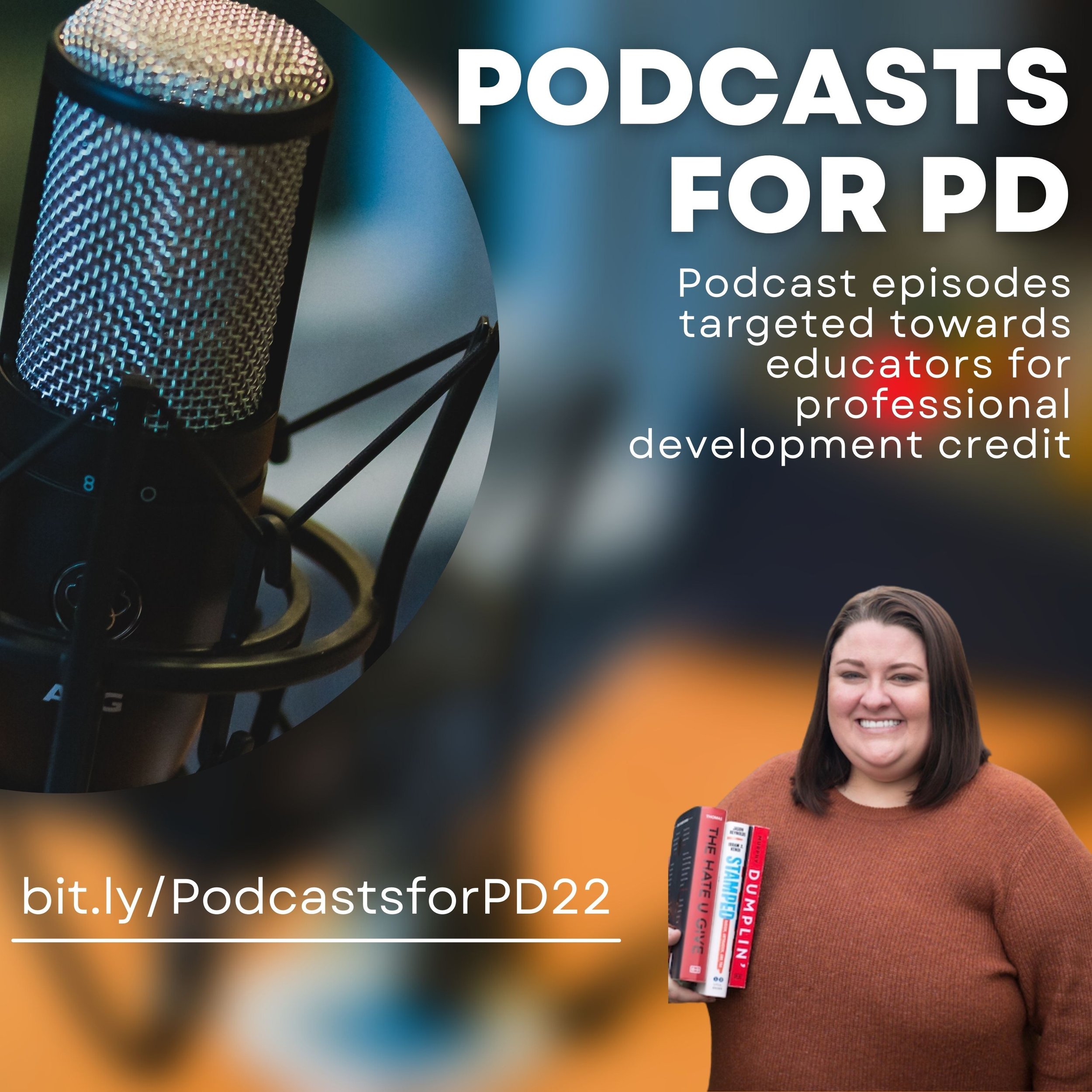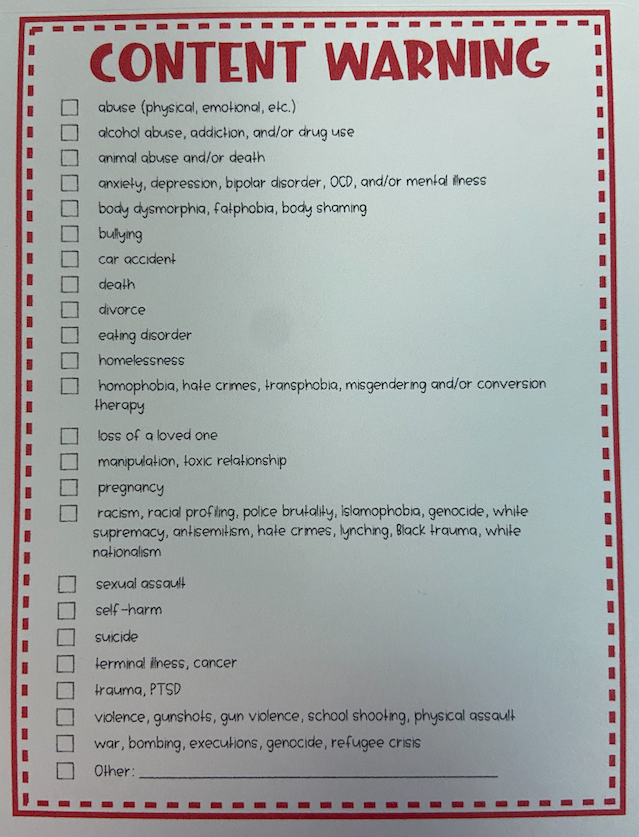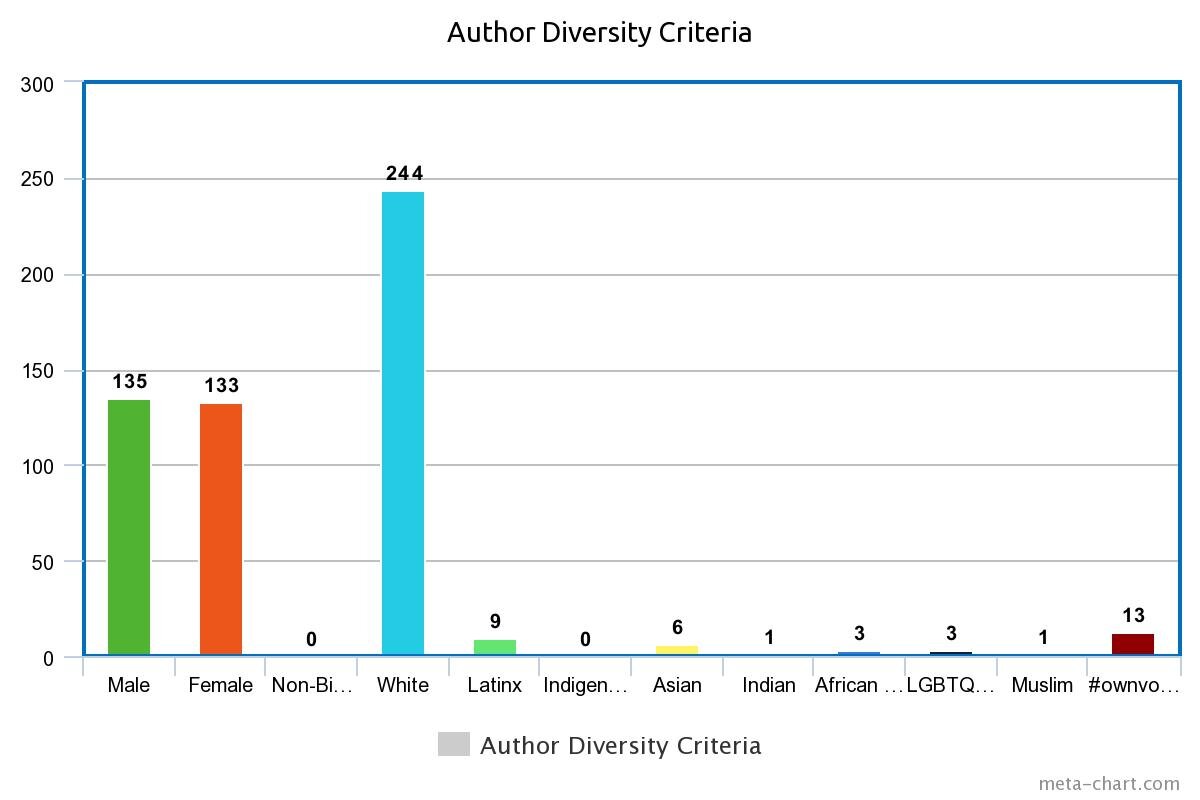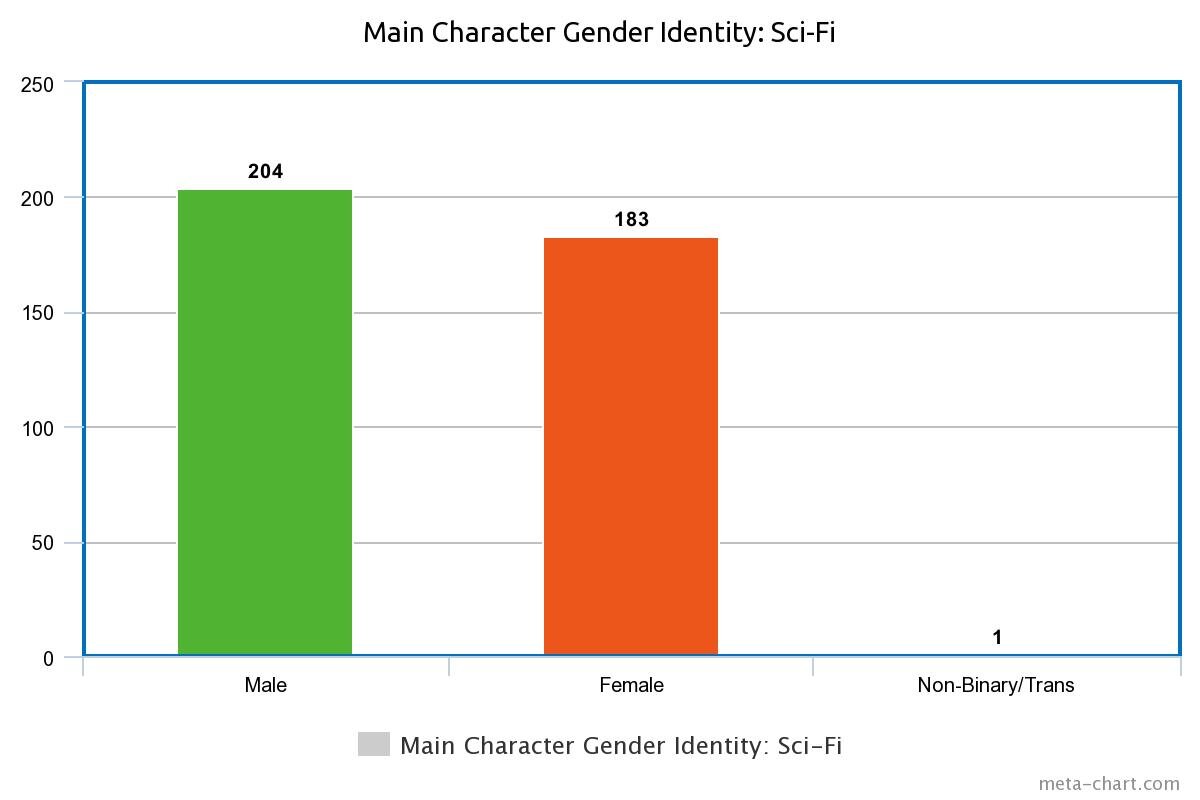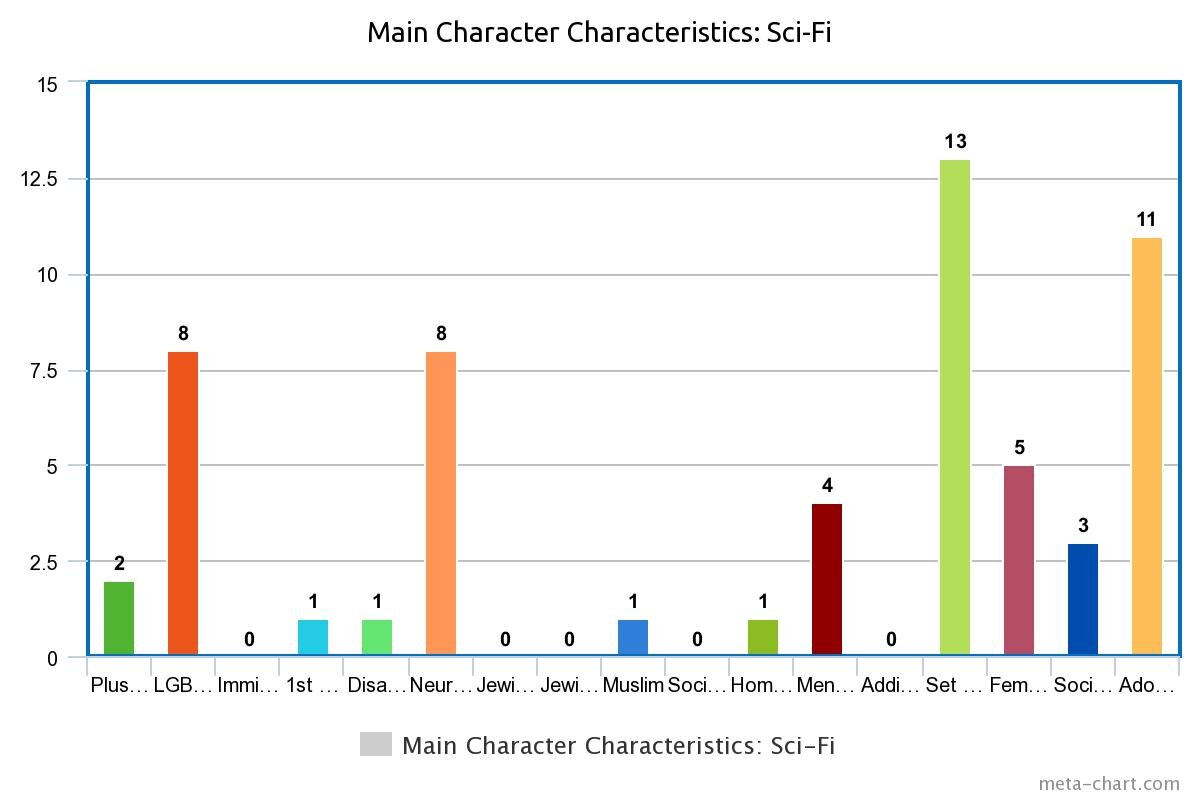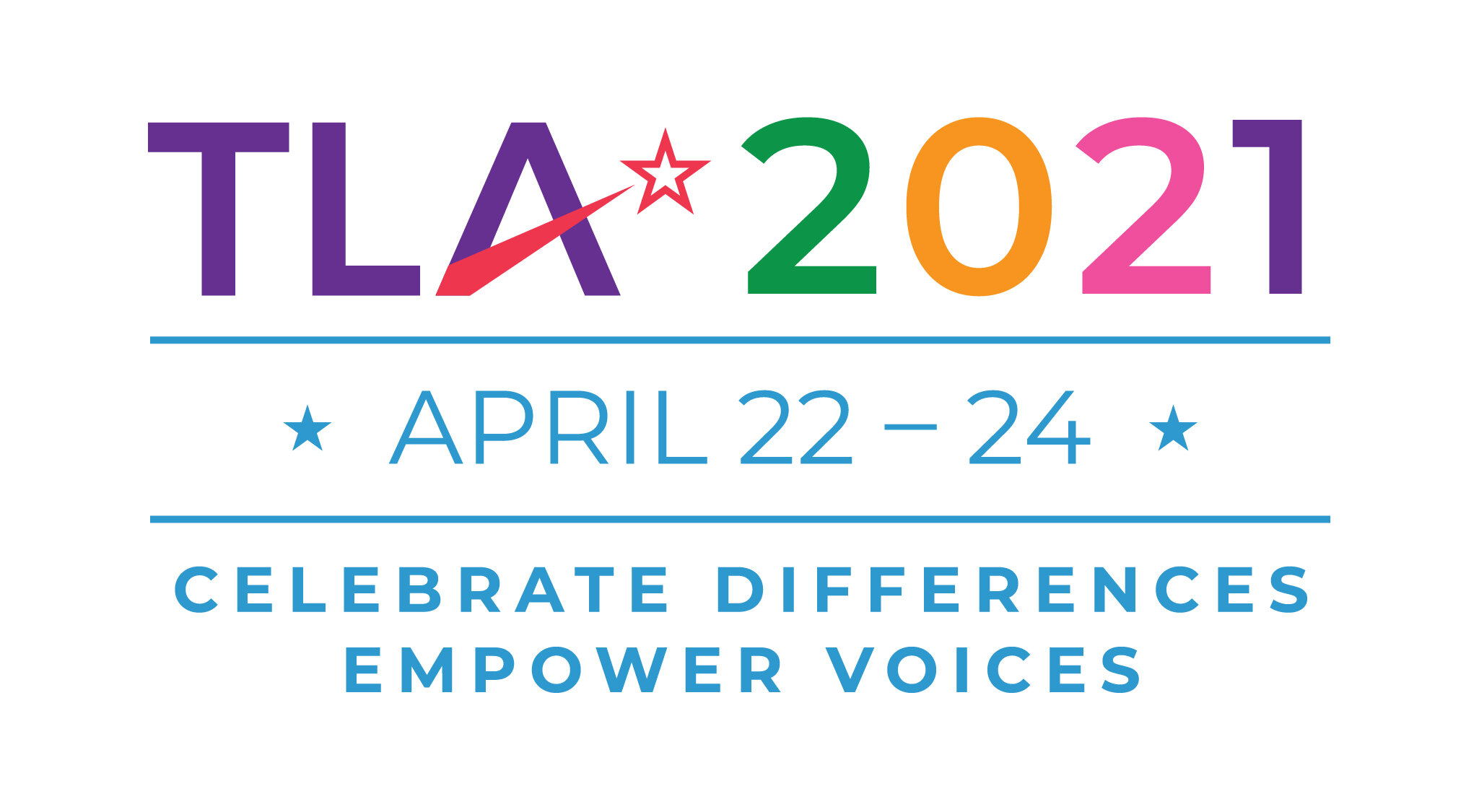Podcasts for PD
Learn about Podcasts for PD: a way for teachers to listen to podcasts about education for professional development credit.
In May my campus’s instructional coach, Kim Stroud, and I were talking about what our fall PD book study could be. She and I have been hosting book studies for four years together. We’ve uses titles such as Kids Deserve It by Todd Nesloney and Adam Welcome, Teach Like A Pirate by Dave Burgess, The Wild Card by Wade and Hope King, Culturize by Jimmy Casas, Personal & Authentic by Thomas C. Murray, and Shattering the Perfect Teacher Myth by Aaron Hogan. Teachers would read the book during a semester period and each week they would respond to question topics I created in Canvas/Google Classroom. They would give their own responses and then respond to a colleague to generate discussions. At the end of the book study we would meet in person and Kim would facilitate a discussion about the book, our takeaways, and goals moving forward. Teachers earn 9 hours of OCT (off contract time) of the 30 hours required each school year and get some great ideas through these books that deal with teacher issues, lesson planning, SEL, classroom management, etc. We’ve had great success with these books. In fact, after our first one (Kids Deserve It) the teachers who did the book study wanted to create a SPIRIT Committee for our campus to help generate more campus culture from the students to the staff. That committee is still active today and is run by Kim and myself. *If you’d like access to any of the book study questions or more information on titles and how we ran it, please message me!
However, in May when we were talking about the book studies, we worried they might be getting a bit stagnant. We weren’t finding books as easily, especially after a pandemic, that dealt with what teachers were experiencing in the classroom and beyond. Kim had the amazing idea to find podcast episodes instead of a book study. We liked the idea of podcasts because teachers can listen to them in car, while doing household chores, in their classrooms after school, etc. I posted a question box on my Instagram stories at the beginning of summer asking for podcast ideas that were about the education world or time management, SEL, mental health, etc. and my PLN delivered! I had a long list of podcasts to listen to and spent the summer going through various episodes and curating a playlist that covers a wide range of issues teachers might need advice about for 2022 such as social-emotional learning (SEL), mental health (their own and recognizing student issues), equity, creativity, inspirational, #edtech, how to reduce workload, student feedback, working with parents, self-pacing, goal setting and more. We wanted to provide a bit of everything and even have an option to choose two podcasts of their preference from The Mindful Kind so they have some choice in what they want to listen to.
How it’s going to work: Podcasts for PD will open in September. I have created this Google Form that teachers will fill out when they finish listening to a podcast. There are at least 21 on the list so they will do this 21 times after each one they listen to. They have until November 18 to listen to them all and provide feedback so they can take it at their own pace. Then on November 28 we will meet as a group after school for an hour to discuss takeaways, goals, etc. and Kim will run that session, as she’s way better at facilitating discussions than I am. At the end of the meeting all participants will receive 9 hours of OCT credit towards their goal of 30 for the year. We hope this is helpful and beneficial for our teachers in a multitude of ways: earning professional development credit, getting some tips and tricks to use in the classroom, and some goals for themselves and their students for the rest of the year. Book studies have been successful and we hope Podcasts for PD will be as well. Please let me know if you have any questions or concerns about our book studies/Podcasts for PD. Below is the current podcast playlist for our first semester. I’m sure it will change each semester as we get feedback and education changes. *If you have any suggestions for other podcasts, please share those as well!
This Teacher Life: Three Things You Have Permission To Do This Year 23 min, 3 Things We Should Do In Our Classrooms 18 min
The Creative Classroom with John Spencer: Creative Habits vs. Creative Momentum 20 min
Leading Equity: Equity vs. Equality 7 min
Self-Care for Educators: Squad Goals 7 min
The Mindful Kind: Pick 2 episodes to listen to that apply to where you are right now
Let’s K12 Better: Let’s Talk About Empowering Digital Leaders 46 min
Simon Sinek: The One With Brene Brown 53 min
Brene Brown: Masterpieces and Messes with Jason Reynolds 78 min *optional, Atlas of the Heart: A Sisters Book Club, Part 1 of 3 57 min
Cult of Pedagogy: Goal Setting for Teachers 23 min, 6 EdTech Tools to Try in 2022 42 min
Truth for Teachers: Small Changes for Reduced Workload 20 min
Brave New Teaching: The Key to Classroom Management + 20 Favorite Strategies 41 min
The Shake Up Learning Show with Kasey Bell: Tips and Tools to Improve Parent-Teacher Communication 33 min
Easy EdTech Podcast with Monica Burns: Tech Savvy Teens 26 min
The Edugals Podcast: Descriptive Student Feedback 29 min
The House of #Edtech: The Canva Classroom, Increase Student Engagement 39 min
Modern Classroom Project: Self Pacing in Secondary Education 58 min
522+ min total
Use: bit.ly/podcastsforpdform22 to complete after each podcast you listen to
I should get at least 21 reflection form submissions from teachers by November 18.
*Other podcasts to consider for the future: EduProtocols, Sharon Says So, EB Academics, Jen Hatmaker, SEL Five, Google Teacher Podcast, Sounds Good with Branden Harvey, Backhanded Optimism with Adam J. Kurtz, Happier by Gretchen Rubin, Daily Breath with Deepak Chopra, Dear Sugars, Good Life Project Podcast, The Daily, The Science of Happiness, Making Space with Hoda Kotb, That’s So Retrograde, Todd Nesloney.
Let’s BeReal.
Learn about the app BeReal and how you can use it in the library.
There’s a new social networking app that a lot of kids are using and it’s called BeReal. So what is it and how can you use it in your library?
BeReal is an app that is available for download across platforms that “show your friends who you really are, for once," by removing filters and opportunities to stage, over-think, or edit photos. Take a look at the rules of BeReal below. *You must have notifications on for this to be successful. Many teens and tweens are over Instagram thanks to the new platform that has ads and suggested accounts all throughout your feed. Maybe BeReal is the next photo sharing app for teens.
The app notifies users at a random time throughout the day that it's "time to Be Real." A two-minute timer starts when the user opens the app, giving them a limited amount of time to take a picture of whatever they're doing at that moment. Be aware! The photo will take a picture of what’s in front of you, as well as a selfie to keep everything 100% authentic to make sure you’re really where you are, doing what you’re doing at the time the notification goes off and that you’re looking exactly how you normally look—no filters!
When you sign up it’s going to almost immediately ask you to take your first BeReal photo. Get ready! You have 2 minutes to complete this activity.
Throughout the day BeReal will send you a notification to post your BeReal photos. You have 2 minutes to complete this, but if you don’t, you can still post your photos. It will just be late and friends will get a notification if you post late, which I’m not the biggest fan of TBH. Be aware: you can only delete your post once a day after you've posted it on your feed. While you can retake your BeReal as many times as you like during the two-minute countdown, once you've pressed "post," you can only delete and retake it once. Don’t try and create content on your own—you won’t be able to. The point of this app isn’t to capture the perfect picture any time you want, but to BE REAL and take a photo in real time of what’s happening in your daily life.
In other social media apps you can react to posts of your friends. It works the same with BeReal, but you can actually selfie the emoji yourself. When I went to heart-eyes emoji a friend’s post it asked me to take a selfie of what I think that emoji looks like on a human. It saves it so I can continue to use my version of the heart-eyes emoji on anyone’s post. These are called “realmojis”. Like with other social media apps you can comment on others’ posts as well as react. You can create a comment under your post after you take your photo so that it explains what you’re doing, where you are, etc.
Like the app 1 Second Everyday, BeReal creates a digital scrapbook of all your posts. I like that feature so I can have a memory photo roll to look back on. This app is also not a big time waster. You can click on Discover and view others’ posts, but basically how it works is you wait for your notification, take your selfie/photo within a 2 minute time frame and move on with your life.
What I like about this for student use is that it shows them what’s real about social media and what’s fake. So much of IG is posed, filtered, edited, etc. Many students believe what they see and think that all these celebrities and influencers live their lives like their posts. This app forces all users to show what their everyday life looks like without getting that “perfect shot”. I plan to use this app when I teach digital citizenship this year.
How I plan to use it in the library:
With everything happening in the library community with book challenges, I believe that a lot of it stems from ignorance about our profession. Many people don’t know all it takes to become a librarian and what we do on a day-to-day basis (and no, it’s not sit and read! I wish!) With this app I’ll be able to take real time photos of what I’m doing in my library whether it be inventory, weeding, shelving, processing, curating, research, teaching lessons, working with library aides, clubs, PD, meetings, hallway duty, creating displays, etc. The list is endless for what we do everyday in the library and how detailed our job is, as well as how much training goes into what it takes to be a knowledgable and proficient librarian. Many don’t know how we choose books and if we create an “open door policy” so to speak, it gives the public a look into our lives in the library. Perhaps we can reach more citizens if we show what a day in the life of a librarian looks like. As my friend and fellow school librarian, Amanda Jones, says, “It’s not bragging; it’s advocacy.”
One last note: this app is still new-ish and is working out the bugs. Be patient as they continue to roll out updates to fix all the kinks with any new app.
Let’s BeReal this year and have some fun in the library! https://bere.al/thenextgenlibrarian
*Thanks to The Insider and NPR for help with some of the features.
Content Warnings
Learn about our new project: content warning stickers!
Diversity Audit is completely done (as far as my library aides are concerned)! I have to go through and put the data into the spreadsheets then share in blog posts, but the students are ready to move on to our next project. I’m so excited that we will be moving forward with our Content Warning Project. Students will go through the shelves, book by book, and using this website (and Goodreads/StoryGraph) they will find what content warnings are in which books. Thanks to Willow Darling I have personalized content warning stickers that I purchased from Sarah Styles at willowdarling.com. If this is something that you want to purchase and edit to fit your needs, contact Sarah through her website or Instagram (@willowdarlingbysarah) and she will sell you the template for you to print at home on sticker paper. I was able to get a set of 200 sheets of 6 per page. I’m hoping this will hold me for what we need in all my genrefied fiction sections.
For the past several months I have made it a goal to use content warnings in my bookstagram posts when I do my daily book reviews. I have found it to be more and more common on Goodreads and StoryGraph lately too. By listing content warnings in books I am hoping to have students be more aware of what they want to read and what they feel emotionally ready to read. Social Emotional Learning is at the forefront of education right now, in addition to checking on students’ mental health. By labeling these trigger or content warnings we are helping those students acknowledge their traumas and feel comfortable reading what they choose to.
I recently had a comment on one of my bookstagram posts about how content warnings can be perceived as spoilers. To some degree, I agree with this. However, I believe that people who are triggered by content in books need to be protected over those who might get some type of spoiler. Most of the content warnings on the list below can be taken in many different contexts so I hope that anyone who sees them checked, realizes there is so much more than one word to a book. I would rather protect the mental health of someone going through (or having gone through) a traumatic event and can’t handle reading a book dealing with similar topics than someone who feels like checking one of these boxes is considered a book spoiler. For those who are worried about spoilers, if they don’t have any triggers (like the person who commented on my post said they didn’t), they can skip the front title page altogether, missing the content warnings sticker completely so they’re not in danger of having their books spoiled.
I also think this will help with all the book challenges that have been popping up in Texas and beyond. If a student can see right away that a book has content in it that they aren’t interested in reading or content that might be triggering for them, then they won’t check out that book. I plan to also have my library aides add notes for the book in Destiny Follett so that we can look up the content warnings as well. This is a big project that will take us most of the year, in addition to other tasks such as book fairs, weeding, inventory, etc. I can’t wait to see the results of having a library that has content warning stickers. Reach out if you have any questions about this process!
Library Orientation
In the past few weeks I’ve had a lot of librarians reach out to me asking what I do for library orientation. This blog will discuss various ideas you can do to get students excited about the library, as well as share important information with them. *Please make a copy of any of the documents linked in this post if you want to edit.
Google Slides: you can always do the tried and true presentation option. I’ve done it this way before when I didn’t have much time. Here are two examples you can make copies of if you want to go this route: ORMS Library Orientation and Virtual Library Orientation. Including your Bitmoji, active links, QR codes, cute transitions and backgrounds can keep students’ attention and share the information you need. It can also be another opportunity for students to “sit and get” so to speak, meaning they get a lot of that in class. Orientation can be a fun way to get them up and moving, but if you do use the Google Slides option make sure you end with a tour and check out so kids can move around and see the library for themselves.
Family Feud: I love playing this as students’ first introduction into the library. It creates an environment of fun, excitement and shows that MY library isn’t one where SHUSHING happens a lot. If you click on this Powerpoint presentation you will get the game already set up with transitions, music, etc. All you need to do is change your questions to fit your library. I put the students into two groups usually (please try and stay away from boys vs. girls. It can exclude non-binary students, as well as also make students feel like they have to fit themselves into one of those two categories and they might not be ready to do so just yet). I use a buzzer from Lakeshore Learning Store, but you can get one from Amazon here. I usually have a prize the winning team can get.
Breakout Games: Escape Rooms, Breakout Rooms, games, etc. are a fun way to create teamwork between students in classes. It also promotes outside-of-the-box thinking, race against the clock and lots of exploration of the library to find and solve clues. Click here for some ideas I’ve done in the library, as well as BreakoutEDU.
Goosechase: This app is super fun to create classroom or whole school scavenger hunts, however, due to COVID I haven’t used it in over a year. I have a presentation I’ve created, but might be outdated since apps do evolve and change frequently. Feel free to take what I’ve used and make any changes as you find them. I highly recommend using Goosechase, even if it’s not for your library orientation. Goosechase for Teachers, Goosechase for Students.
Bitmoji Classroom/Library: Last summer Bitmoji classes were the THING. I’ll be using Canvas this year instead of my linked up Bitmoji library, but I still think they can be adorable and it has all your links in one place, one of the strongest cases for someone to keep using one. Here are some links to get you started if you wanted to go the Bitmoji route: My Bitmoji Classroom, Bitmoji Templates, Bitmoji example.
Here’s a list of apps you can use to share your library orientation with and then you can play a quiz-style game to see if they retained the information: Kahoot, Quizizz, Poll Everywhere, Quizlet. I’ve also used the website Riddle to create a “Find Your Favorite Genre” personality quiz. The students love doing this magazine-type quizzes and you can create your own!
Please comment or message me what you’ve used for Library Orientation in the past or what you’re using this year. (I’m sure there’s some I’ve forgotten that I’ve done before and I’m always looking for new ideas!)
New School Year Resolutions
What are your resolutions for the upcoming 2021-2022 school year?
I’m back! Took some time off this summer to focus on me and now it’s almost time to start the 2021-2022 school year. As I sat down to write my goals I started thinking about another time of year when we as a society make goals, plans, promises for the upcoming year and that is the dreaded, but usually required in the U.S., New Year’s Resolutions. It’s when the entire world reflects on the previous year and makes new goals for the upcoming 365 days. Teachers get to do this twice a year instead of once. I don’t think any other profession in the world makes resolutions two times a year other than those in education. In the field of teaching we are constantly growing, changing, reflecting on what worked and what didn’t from our previous school year. Last year was anything but normal for teachers. We had to adapt more than we ever had before in order to teach students remotely, in a hybrid model or face-to-face. COVID restrictions made it almost impossible to teach at the level we are used to and with the same norms and consistency we always had. However, almost every educator I know took this summer and at some point began thinking on what they want to do differently for the next year.
Some educators write their goals/resolutions down, others make it a part of their professional evaluation system for their evaluator to monitor throughout the year, some have them mentally while others jump in head first and start implementing change immediately. I’m a list maker. I have post its on the side of my computer at work, on my desk, on the Stickies app on my desktop, reminders in my calendar on my phone, etc. constantly nudging and prompting me of the goals I have set for myself. Some are whole year goals while others are ideas, lessons, clubs, library actions, etc. of what I want to do at some point in the year.
One goal I did not meet last year was to finish my Diversity Audit. With almost 10,000 titles in fiction alone it was a daunting task to try and complete, during this past year especially. However, I am only three genre sections away from completion (Historical Fiction, Realistic Fiction, Fantasy) and while they are my biggest sections, I am going to make it my number one goal to finish that this year. I also got new shelving for my graphic novels so I plan on genrefying that section in itself such as: manga/anime, general graphic novels, nonfiction, superhero, etc. I am so excited to do this because when I got to this library six years ago there weren’t many graphic novels. Now I have tripled that section. Other goals I have: present more at the state and national level, be more active on Snapchat for my brand, continue with TikTok, IG and Twitter for my brand and PLN connections, bring my clubs back on campus, earn more #edtech badges, continue to blog, and above all else: connect with my students more now that restrictions won’t be so tight in the library.
What are your New School Year Resolutions?
Diversity Audit: Science Fiction & Scary
Read about how my diversity audit went for my science fiction section!
I knew it would be a while before I got around to doing the next genre section of my Diversity Audit, but we have been working diligently on it in between state testing, classes and all around end of year busy-ness. Since the final steps require me to fill them out, it’s not going as fast as it could if all my library aides could complete the spreadsheet (haha). I was able to complete Science Fiction this week and liked how equal it was between male and female authors, but I’m still very low in Non-Binary or Trans authors in all categories so I will do more research to include them in future purchases. #ownvoices authors was up from other categories, but still not where I want it to be. And, as always, we need more representation in other races/ethnicities other than white. Main characters are close in Male and Female, but need more Non-Binary or Trans characters. Again, there were no strong standouts for main character ethnicity other than White, as usual. In Main Character characteristics the four stand outs were: LGBTQIA+, neurodiversity, set outside of the US and adopted, but even then the highest total books that had diversity of any kind was 13. We need to do better in Sci-Fi overall with purchasing and publishing. White males and females aren’t the only ones set in space—I just know it! Does anyone have any suggestions for more diverse sci-fi books in middle grade or young adult? Shout them in the comments!
Scary is the newest genre section I was able to finish in the diversity audit of my middle school library collection. As you can tell from the charts below, Scary was very disappointing. I would put it close to my lowest diverse section so far, which is Adventure. If not for the significant amount of female characters it would be considered the worst so far.
To be honest I wasn’t expecting a lot of diversity in the Scary genre section. Most of us think of Goosebumps, Five Nights at Freddy’s, Bad Girls Don’t Die, The Haunting of Sunshine Girl and other equally terrifying stories that feature mostly white characters. Recently Hide and Seeker by Daka Hermon was published and chosen as a ProjectLIT Middle Grade selection because it was the first scary book that I can remember that featured a Black person on the cover and a Black female author. We need more #ownvoices, diverse and inclusive books in this genre so I will make it a point of purchasing books like this moving forward. When Set Outside the US is the highest in Main Character Characteristics, there’s something wrong.
I was excited to see there were more female MCs than male, even if only slightly. Does that mean the publishing industry thinks girls are scary?! LOL We need to do better overall in this area…now on to Humor. I believe this one will also be heavily white in authors and main characters due to books like Diary of a Wimpy Kid, James Patterson’s Middle School series and more. I’m hoping I’m wrong!
Mystery—I’m coming for you next! Dun-dun-dun!
Author Diversity Criteria: Sci-Fi
Main Character Gender Identity: Sci-Fi
Main Character Race/Ethnicity: Sci-Fi
Main Character Characteristics: Sci-Fi
I Miss Normal Conferences
Read about how different conferences are in the time of a pandemic.
In three weeks it will be time for the annual Texas Librarian Association conference. This is the second year that the conference will be virtual. Last year I was all set to help run the 2020 TLA Conference in Houston when one week before the conference was to begin, it was cancelled due to COVID-19. Thus kicking off the months and months of online conferences in the education world. I can’t tell you how many Zoom conferences I’ve attended in the past year. And while it’s nice to hear an author speak like that or hear experts discuss topics, NOTHING will ever be able to replace in-person conferences.
It’s not just about seeing, meeting and hearing authors speak. It’s not just about attending in-person sessions to learn more about how to best help your patrons, students, teachers, community, etc. It’s about connecting IN PERSON with others in our field. In the last year I have grown my PLN (professional learning network) so much. I have best librarian and teacher friends that I’ve never met in person. We have only seen one another through a screen. I am more than ready to see them in the flesh, hug them and interact in the physical world. That’s by far my favorite part of attending conferences. I learn so much from my peers and then getting to see them, both professionally and socially, fills my cup more than I can tell you. No one “gets” this profession more than those who live it day in and day out. So when we all gather together in one place, it’s nothing short of magical.
I didn’t get to attend my first Mavericks Reading List panel last year because they only included certain sessions in the virtual conference. Our Maverick panel this year will be pre-recorded book talks and while I know that it’s important to still have a conference, even if it’s virtual, I feel so sad that I’m missing out on big events I would have normally been a part of like ProCo 2020 last year and Maverick panels last year and this year. As the incoming Chair for the Maverick List I looked forward to giving the new members their capes at our meeting at TLA this year. Instead they will receive it in the mail.
I miss lugging around bags and bags of autographed books. I miss standing in line for a popular session or an author signing. I miss taking fast and furious notes in sessions I attended. I miss my feet aching at the end of the day because I’ve walked thousands of steps in a conference hall to learn and grow. I miss grabbing lunch or attending a sponsored luncheon with fellow librarians. I miss meeting up with people I’ve never met in person, but am inspired by daily. I miss meeting authors and getting to interact with them. I miss the late night After Hours TLA events like the Lip Sync Battle or Drag Queen read alouds. I miss hearing the award winners announced. I miss hearing the keynote speaker, whoever it may be, who always seems to understand our profession’s strengths and challenges. I even miss the housekeeping announcements at the beginning of TLA and the Region meetings.
All this to say, I know how much work goes into taking an in-person conference and making it virtual and I am so thankful to all who helped put this and every other conference I’ve attended this year together. I know all of this was 100% out of our control. It doesn’t take away the fact that we are all missing the normal conference experience and cannot wait until we can once again connect with each other in person. And that conference, whenever or wherever it may be, is going to be lit.
I’m Ready For A Return To Normalcy
Anyone else ready for a return to normalcy?
We are coming up on the one year anniversary of COVID-19 effecting our lives, at least for us in Texas. We left school on Friday, March 6, 2020 and didn’t return until the following school year, August 24, for the first day of school. For many school districts around the country, teachers and students have been working from home for almost a year. In New Braunfels, TX, where I live and work, we returned in person this past August and haven’t had to shut down since then. We have had outbreaks and followed procedures for them. To say it’s been a different year would be an understatement. We have kids who have the option to be remote learners, as well as in-person or quarantined, if exposed, for 14 days. We have procedures we’ve never had before such as wearing masks (unless at lunch or athletics), hand sanitize as much as you can, bathroom breaks as a whole class to prevent mixing of kids, A/B block scheduling to prevent too many passing periods of possible exposure. The library has also never been so different. Students aren’t allowed to browse the shelves, we do hold deliveries to classrooms instead of students coming on their own to look and pick out books, we have to sanitize the check out and student tables in between classes and all my fun things in the library are in quarantine for the year such as our couches, big comfy chairs, our Read & Ride exercise bikes, etc. We can’t do book studies because we don’t have enough copies for every student. I can’t have my clubs like Robotics, Makerspace, etc. because of students touching the items.
But we had adapted. It’s been almost 3/4 of the year like this—you can get used to a lot in that amount of time. However, on February 12 we left again, thinking it was going to be a three-day weekend for President’s Day, only to be out over a week due to Snowpocalypse 2021. In Texas it has been really bad. Busted pipes, ceilings caved in, water damage, power outages, low food supplies, and overall coldness for weather we don’t see ever in Texas. We were not prepared. I worried about my students throughout this entire time, as well as not having power off and on for three days. It was scary and another unprecedented event in an already unprecedented year. It just had me thinking: I’m ready for a return to normalcy. And it’s odd because it’s getting harder and harder for me to remember what that looks like. I can’t imagine walking around with naked faces, hugging and being close to other people again without fear. I’m hoping the spread of more vaccines helps lessen our COVID cases in the U.S. so that we can begin to move in the direction of normalcy, or at least a new normal that’s better than this.
I have a Book Fair scheduled next week—my first in-person one in over a year. We will have protocols in place to keep everyone safe, but again, it will be another example of change in what we are used to. Only 10 students will be allowed in the fair at once, hand sanitizing after payment occurs, no adults allowed on campus as per our rules in place already, etc. I want a normal year, with a normal Book Fair, with normal interactions with my students. This job has been incredibly hard this year. The only bright spot has been being able to spend it with the students. My library aides are the highlight of my day, my why. My library aides have kept me sane in this year of insanity. They’ve kept me connected to why I love this job so much. Unfortunately I haven’t been able to connect with the rest of the students as much due to lack of time they’re in the library for lessons, not being able to see their faces and recognize them, not being able to host clubs and get to know them on that level. I’ve done more on social media because it’s kind of the only way I’m able to connect with the other students on campus. I miss connecting and reaching more students like I have in the past.
Can the crazy weather & COVID-19 times be over now? I’m ready for a return to normalcy.
Diversity Audit Update: Humor
Learn about our diversity audit update including the Humor section.
This week ended with a completion of the Humor section for the Diversity Audit. From here on out there will be some space in between posts as we move into the bigger sections such as Sci-Fi, Mystery, Historical Fiction, Realistic Fiction, Fantasy and Graphic Novels. Humor is a smaller section, but has an alarmingly high number of male authors and while it seems like the main character characteristics are more diverse, the numbers themselves are quite low across the board of what we do have that qualified in each section.
The numbers for authors in this category were surprising to me because there so many male authors and hardly any female authors. Are men the only ones that can write humorous books for middle grade and young adult?! I know so many funny females so I’m going to make it my mission to get their stories in my library next year so this number evens out more. The Diary of a Wimpy Kid series by Jeff Kinney and Middle School series by James Patterson just dominated this section with very little representation anywhere else other than white, male authors.
The main characters had a slightly bit higher amount of females, but not much. It was still dominated by male main characters like Rowley Jefferson and Rafe Khatchadorian. I will add more female-driven stories in the Humor section too. Lastly, I changed the format of the last chart Main Character Characteristics so that the categories would be easier to read.
All in all this section was another disappointment, but I expected it, to be honest. Hopefully Science Fiction will be better.
Author Diversity Criteria: HUMOR
Main Character Gender Identity: HUMOR
Main Character Race/Ethnicity: HUMOR
Main Character Characteristics: HUMOR
Diversity Audit Update: Scary
Read about the results of my scary genre section for my diversity audit 2020-2021
